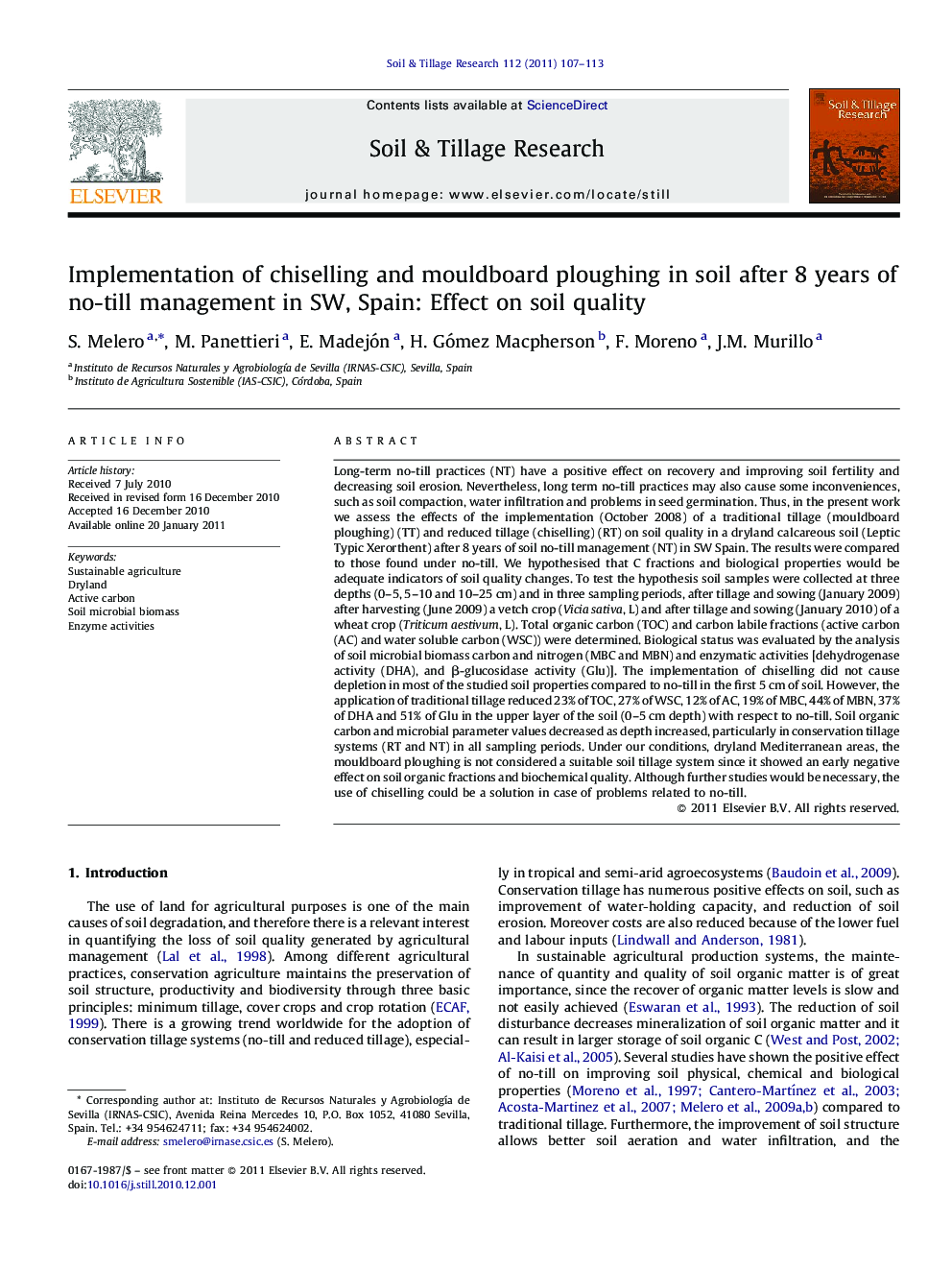| کد مقاله | کد نشریه | سال انتشار | مقاله انگلیسی | نسخه تمام متن |
|---|---|---|---|---|
| 306153 | 513078 | 2011 | 7 صفحه PDF | دانلود رایگان |

Long-term no-till practices (NT) have a positive effect on recovery and improving soil fertility and decreasing soil erosion. Nevertheless, long term no-till practices may also cause some inconveniences, such as soil compaction, water infiltration and problems in seed germination. Thus, in the present work we assess the effects of the implementation (October 2008) of a traditional tillage (mouldboard ploughing) (TT) and reduced tillage (chiselling) (RT) on soil quality in a dryland calcareous soil (Leptic Typic Xerorthent) after 8 years of soil no-till management (NT) in SW Spain. The results were compared to those found under no-till. We hypothesised that C fractions and biological properties would be adequate indicators of soil quality changes. To test the hypothesis soil samples were collected at three depths (0–5, 5–10 and 10–25 cm) and in three sampling periods, after tillage and sowing (January 2009) after harvesting (June 2009) a vetch crop (Vicia sativa, L) and after tillage and sowing (January 2010) of a wheat crop (Triticum aestivum, L). Total organic carbon (TOC) and carbon labile fractions (active carbon (AC) and water soluble carbon (WSC)) were determined. Biological status was evaluated by the analysis of soil microbial biomass carbon and nitrogen (MBC and MBN) and enzymatic activities [dehydrogenase activity (DHA), and β-glucosidase activity (Glu)]. The implementation of chiselling did not cause depletion in most of the studied soil properties compared to no-till in the first 5 cm of soil. However, the application of traditional tillage reduced 23% of TOC, 27% of WSC, 12% of AC, 19% of MBC, 44% of MBN, 37% of DHA and 51% of Glu in the upper layer of the soil (0–5 cm depth) with respect to no-till. Soil organic carbon and microbial parameter values decreased as depth increased, particularly in conservation tillage systems (RT and NT) in all sampling periods. Under our conditions, dryland Mediterranean areas, the mouldboard ploughing is not considered a suitable soil tillage system since it showed an early negative effect on soil organic fractions and biochemical quality. Although further studies would be necessary, the use of chiselling could be a solution in case of problems related to no-till.
Research highlights▶ Long-term no tillage practices have a positive incidence on soil organic matter content and soil biological status, especially in our soil, which has a high risk of erosion. ▶ Implementation of mouldboard ploughing reduces significantly soil organic fractions and soil biological activity, especially in the upper layer of the soil. ▶ Chiselling did not cause depletion in the studied soil properties compared to no-till.
Journal: Soil and Tillage Research - Volume 112, Issue 2, April 2011, Pages 107–113